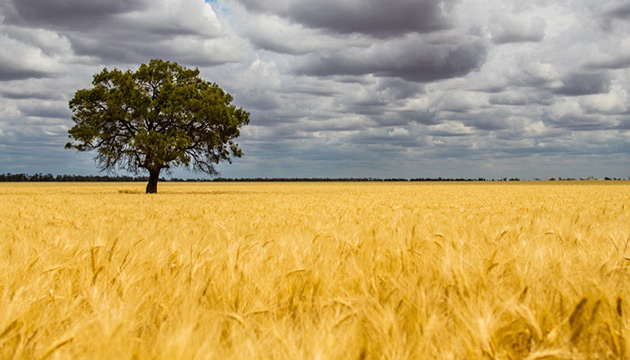Koiwon is carrying on the wheat-farming tradition of the Kirkby family, who first took up land on the black soil plains of north-western New South Wales in 1873.
Story By Virginia Tapp
It’s deceptively quiet on Koiwon. The peace is interrupted only by the occasional outbursts of a rowdy flock of lousy jacks and a small amount of tinkering in the machinery shed. The stillness is masking a swarm of activity, with a dedicated team busily preparing for the wheat harvest that is imminent on the 8000-hectare enterprise. Crops are being marketed and planted, phone calls are being made, and the hulking headers are undergoing some last-minute maintenance.
Located on the fertile black-soil plains of northern New South Wales, Koiwon’s paddocks are thick with wheat crops and there is much left to do before the green tinge fades to gold. Once the grains fill out and harden, any number of engines will roar to life, barely cooling down for the duration of harvest, and stripping thousands of tonnes of grain from the dry stalks.
Whoever it was that named Koiwon after the local Indigenous phrase meaning ‘as the rain approaches’, was either an optimist or had a wicked sense of humour. This year the fields of gold are tentatively signalling the end of what has been a heartbreakingly dry four years.
“This year we have 1800ha of durum, 800ha of bread wheat, 1700ha of chickpeas, 330ha of faba beans to harvest, as well as 2500ha of dryland cotton to plant,” says Bruce Kirkby, who has been farming Koiwon for more than 30 years. “The wheat is looking okay but the dry finish has probably wiped off 20 percent of the yield.”
Bruce is a tall man and a lifetime of work outdoors has left him physically fit, albeit with a permanent sock tan. He’ll be seeing a lot more sun over the next few months, running the harvest of almost 7000ha of various commodities. “This will be our best year in the last four; the other three have been pretty disastrous,” Bruce says. “I’m hoping our wheat goes above three tonnes to the hectare this year; if it had rained we’d have been looking at four. The biggest crop we’ve ever grown went six tonnes to the hectare – that was a huge year – but we haven’t grown anything like that for a long time now. It just goes to show what this country can do when the conditions are optimal.”
This Story is from Issue #104
Outback Magazine: Dec/Jan 2016










